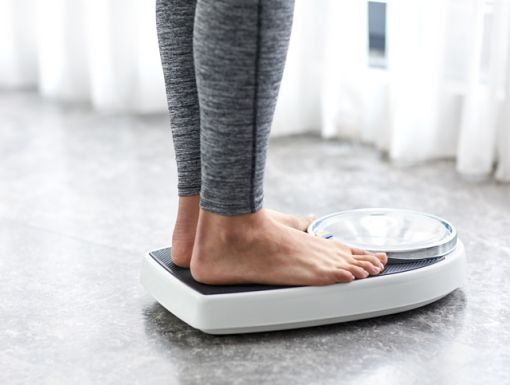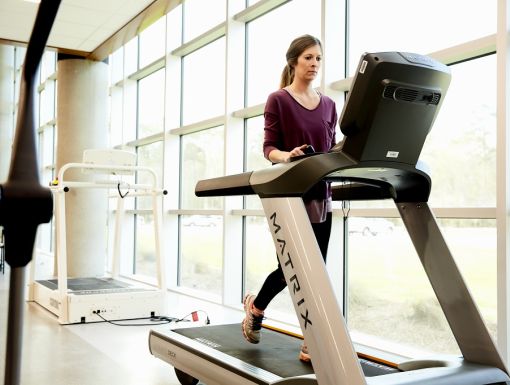
Baseball Pitching Tips: How to Keep Your Arm Healthy
Whether you are tossing the ball around in the backyard or pitching at a competitive level many athletes, coaches and parents will experience a sports related injury at some point. However, there are several ways to perfect the mechanics of your pitch and keep your throwing arm healthy.
Arm Mechanics
While throwing, there are important factors to keep in mind to ensure a safe and efficient motion. To start the throw, the thrower should line their shoulders parallel to the target. The thrower should pull the ball back away from the target while stepping with their lead foot towards the target. During this time, the glove hand should extend directly at the target. Once both arms are extended, the torso should rotate while bringing the chest to the glove hand and flexing the throwing elbow to 90º while coming through with the torso. It is critical to keep the thrower’s head upright with the eyes aimed at the target. If the head begins to tilt, it could cause the arm position to fall or rise and create more stress on the shoulder or elbow. As the throwing arm passes the torso and extends towards the target, the thrower should use the fingers and wrist to help guide the ball and add any desired spin if necessary. The thrower should always begin with warm up throws at shorter distances to allow the involved muscles to stretch and activate appropriately before increasing intensity and distance. Practice is key for throwers to achieve efficient and safe mechanics for throwing a ball.
Hips and Core
A common error many athletes, coaches and parents tend to make while practicing the throwing and pitching processes is that they fail to understand the importance of hip and core engagement. Shoulder and arm mechanics are extremely important for throwing athletes, but hip function and core strength are just as, if not more, important. The most powerful throwers do not only have strong arms, but also the ability to drive from their hips to generate force, thus hurling the ball like a slingshot. The ability to pull the hips forward before the arm comes through (also known as hip to shoulder separation) is the main way to prevent elbow and shoulder injuries. Athletes should always lead with their hips and keep the head and shoulder behind the hips throughout the throwing motion. Studies conducted on overhead athletes show that not only do increased core engagement and hip function lead to a significantly decreased rate of shoulder and elbow injuries but also an increased velocity and throwing efficiency.
Mobility
The act of throwing a ball creates a great deal of motion throughout the torso as well as the hips and arm. A lack of mobility in the thoracic spine of a throwing athlete can lead to compensation by other body parts involved. This would increase stress in those areas and could lead to injury or less efficiency while throwing. While training and during the offseason, it is important for throwing athletes to incorporate thoracic and lumbar spine mobility exercises into their exercise program. These types of exercises are typically very simple and do not take a lot of time to complete.
Recovery
Throwing athletes more often suffer from overuse injuries compared to acute injuries. Overhead throwing motions cause repeated stress in and around the shoulder and elbow joints, and this is especially true for pitchers. Because of this, arm recovery is one of the most critical components in preventing injury and continuously performing at a competitive level. Considering pitch count is important for the healthiness of a pitcher; the younger a pitcher is, the more this should be considered. Young athletes should take the time to listen to their bodies and understand the importance of taking time off from throwing, especially if they are feeling pain or discomfort anywhere in their arm. Throwing athletes should also understand that it is important that they take time during the offseason to rest their arm and not throw. Athletes should take between 2 and 4 months off from throwing completely a year to allow for the arm to recover and heal properly.
Living a Healthy Lifestyle
Finally, living a healthy lifestyle and taking care of the body is going to be a huge determining factor in how well athletes feel and perform. Enough cannot be said about how far eating nutritious meals, staying hydrated, getting a good night’s sleep and getting plenty of mental exercise will go for an athlete in any sport at any level. Athletes often burn way more calories than non-athletes, so paying attention to how you are eating as an athlete is key in ensuring your body has enough fuel to keep performing. Hydration and quality sleeping habits will allow athletes to recover more efficiently and to overall feel better during the day and while performing. These points should be considered all the time but are especially true during the season. Consistent competitions take a toll on the body, so taking care of it during a season is critical in success and injury prevention.
To learn more about the Ochsner Athletic Trainer Outreach Program, please visit: https://www.ochsner.org/servic...



